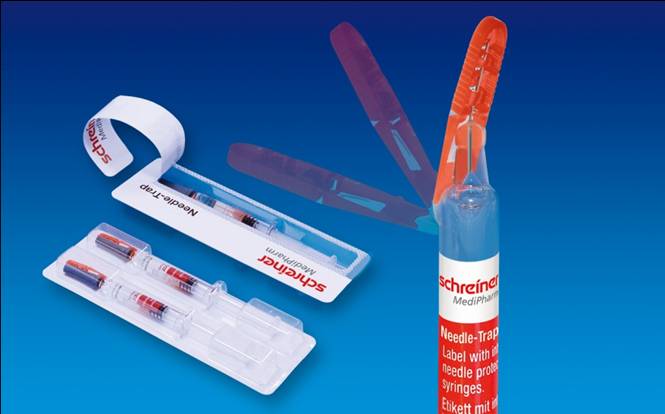
Needlestick Injury is defined as the accidental puncture of the skin by a needle during a medical intervention
Accidental exposure to blood caused by needle injuries may carry the risk of infection by blood-borne viruses.
Accidental contact may occur-
- During re-capping
- When an uncapped needle has ended up in bed linen, surgery clothing etc
- When taking an unsheathed used needle to the waste container
- During the cleaning up and transporting of waste material
I was reading on internet ways to avoid this injury and found that “the single most important measure to prevent needlestick injury is to not put the used needle back in its original cover; re-capping and re-sheathing must be avoided. Instead at most of the places, rigid puncture-proof containers are being used. Make sure the container is always at hand”
Well OK, these containers are effectively doing their work since many years.
- But what if the containers are not available at hand?
- What if there are multiple rooms in a testing lab and only few containers are available?
- What if person is too busy to throw the needle in the container placed at a distance?
- And what about the investment in installing these containers in every testing rooms?
- There are so many ifs and buts and we know that ‘no-error places’ where HACCP is being followed are not everywhere.
 Got to know about this product which is actually a label and thus is in integral part of the syringe itself – Needle Trap
Got to know about this product which is actually a label and thus is in integral part of the syringe itself – Needle Trap
This is an innovative product which is cost effective alternative for pre-filled syringes, which helps protect healthcare professionals from needlestick injuries
This is unique since the safety mechanism is an integral component of the label. No external containers, no table top equipments required for destroying the needles.

As a packaging technologist, we may think that the production of such syringes with label is a difficult task and may involve huge investment in new machineries. But actually this is not required. The product may be easily integrated in the existing process and is adaptable to all standard syringe dimensions. This gives a significant cost reduction due to simple design compared with conventional needle protection systems.

Recently Pfizer (one of the world’s largest pharma company) has opted for this Needle Trap protection label to equip the syringes for its epoetin biosimilar. This makes it the first medication for the treatment of anemia to be launched on the market with Needle-Trap–initially in Germany and Austria, to be followed by a successive rollout on the European market.
Product details at - http://www.packagingconnections.com/schreiner/



